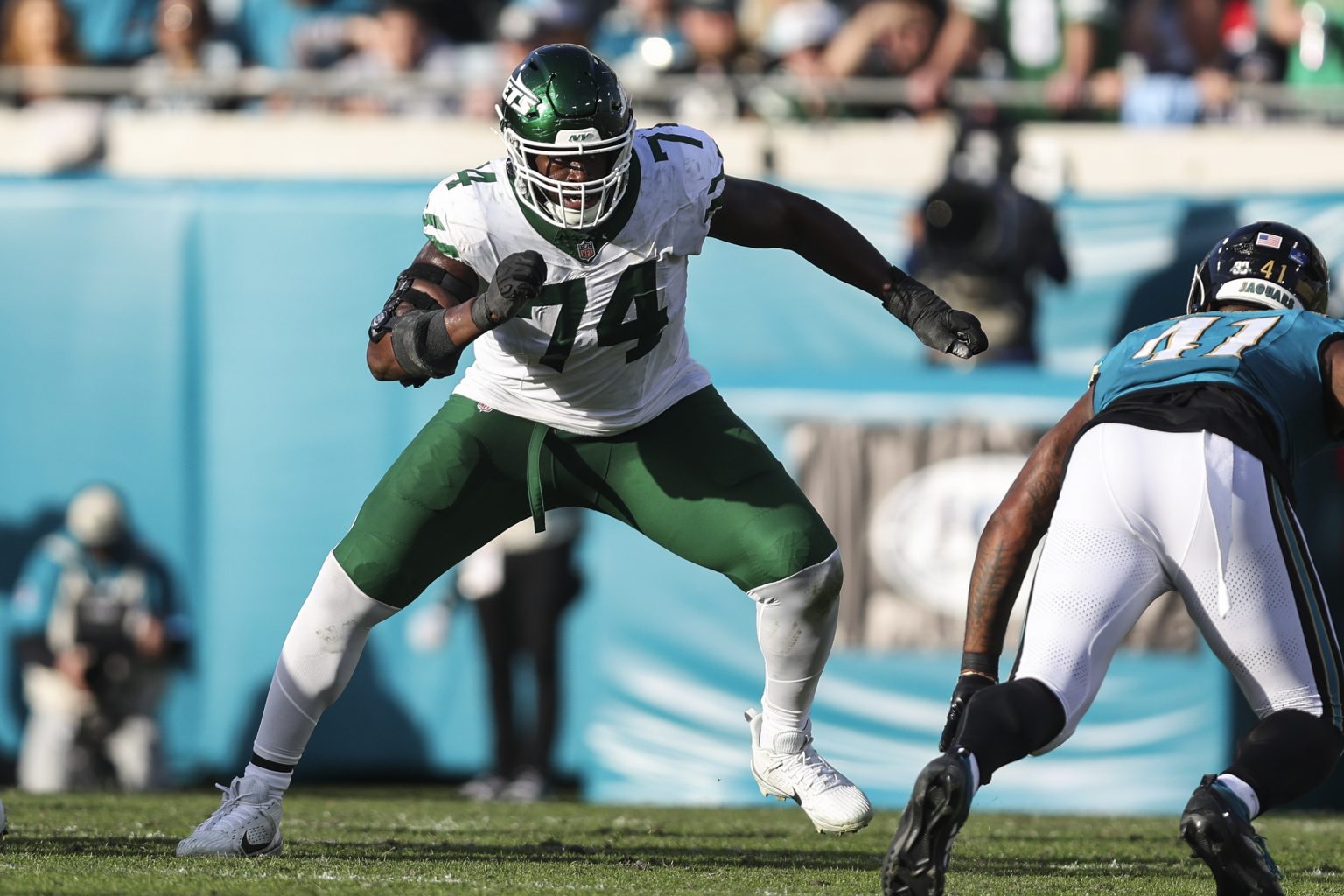The New York Jets suffered another blow to their injury-ridden roster during their Week 17 matchup against the Los Angeles Rams, as starting left tackle Olu Fashanu was carted off the field in the fourth quarter with an apparent injury. Fashanu’s departure further depleted an offensive line that has struggled throughout a disappointing season for the Jets. Max Mitchell stepped in to replace Fashanu, but the loss of a key offensive lineman undoubtedly hampered the Jets’ efforts in a game they ultimately lost to the Rams. The severity of Fashanu’s injury was not immediately known, but his exit adds to a growing list of sidelined players for the Jets.
Fashanu’s injury comes at a particularly challenging time for the Jets, who have been plagued by injuries throughout the 2023 season. The offensive line, a crucial component of any successful NFL team, has been particularly hard hit. The Jets have had to shuffle players in and out of the lineup due to various injuries and inconsistencies, impacting their ability to establish a consistent running game and protect their quarterbacks. The loss of Fashanu, a promising young talent, further exacerbates the challenges facing the Jets’ offensive line as they look to finish the season on a positive note and build towards the future.
The Jets’ injury woes extend beyond the offensive line. During the same game against the Rams, star cornerback Sauce Gardner exited with a questionable designation, leaving the team’s secondary vulnerable. Gardner, a standout rookie, quickly established himself as a key player in the Jets’ defense, and his absence, even if temporary, is a significant concern. Compounding the defensive setbacks, safety Tony Adams also left the game with an injury. Prior to the game, the Jets had already ruled out defensive tackle Quinnen Williams, a Pro Bowl-caliber player and a cornerstone of their defensive front. The cumulative impact of these injuries significantly weakened the Jets’ defense, leaving them susceptible to the Rams’ offensive attacks.
The injuries to Fashanu, Gardner, Adams, and the pre-game absence of Williams underscore the challenges the Jets have faced in maintaining a healthy and competitive roster throughout the season. The constant shuffling of personnel due to injuries disrupts team chemistry, limits practice time for cohesive unit development, and forces less experienced players into prominent roles before they are fully prepared. This instability inevitably impacts performance on the field, contributing to the Jets’ disappointing season.
The accumulation of injuries also raises questions about the team’s training and conditioning programs, as well as player fatigue and recovery strategies. While some injuries are unavoidable in the physically demanding sport of professional football, the sheer number of injuries sustained by the Jets suggests potential underlying issues that need to be addressed. Moving forward, the team will likely need to evaluate their training methods and injury prevention protocols to minimize the risk of future injuries and ensure player well-being.
As the Jets navigate the final stages of a challenging season, the focus inevitably shifts towards the future. Assessing the long-term impact of injuries like Fashanu’s and evaluating the performance of younger players who have stepped in due to injuries will be crucial for the team’s offseason planning. The Jets will need to prioritize player health and development, address any underlying issues contributing to the high injury rate, and strategically acquire talent through free agency and the draft to bolster their roster and improve their competitiveness in the upcoming seasons. The remainder of the current season, while disappointing in terms of wins and losses, offers valuable opportunities to evaluate players, identify areas for improvement, and lay the groundwork for a more successful future.

